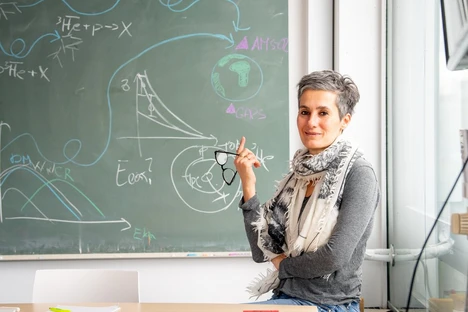Group Leader
Professor Laura Fabbietti received her diploma from the University of Milan. During her PhD studies at the Technical University of Munich (TUM), she focused on the HADES experiment, a dielectron spectrometer with very high acceptance and momentum resolution, built to study the in-medium modifications of vector mesons. As a postdoctoral researcher, she started a new project to study dense and strange hadronic matter, and participated in planning one of the FAIR experiments to measure the charge and matter radii of exotic nuclei (AIC). From 2007 to 2013, she led a 'Helmholtz Young Investigator Group' at TUM, becoming a Junior Professor at the Excellence Cluster 'Origin and Structure of the Universe' at TUM in 2008, focusing on studying kaonic cluster production in elementary reactions at GSI. She has been an associate professor at TUM since 2011 and full professor since 2023, and has also spent time as a guest professor in the Physics Department at Utrecht University, as well as a scientific associate scientist at CERN in Geneva. She developed different detector technologies, ranging from RICH detectors to Time Projection Chambers with GEM read-out and silicon detectors based on CMOS technology, Her main research interest is two- and three body interactions among hadrons, contributing to the establishment of femtoscopy as a key tool for studying hadron-hadron interactions using data collected by the ALICE experiment, which she is associated with since 2014.
